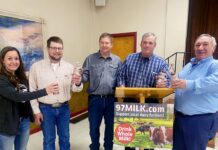SALEM, Ohio – On July 4, final test results confirmed bovine spongiform encephalopathy in a mature crossbred beef cow from Manitoba.
Less than a week later, on July 10, the Canadian Food Inspection Agency began testing samples from an Alberta dairy cow suspected of having BSE.
Officials have confirmed the beef animal was purchased by the owner as part of a group of cattle in 1992. This means the animal was at least 15 years old and would have been born before the introduction of Canada’s feed ban in 1997.
As a priority, investigators are attempting to locate the birth farm, which will provide the basis needed to identify the animal’s herdmates and the feed it may have been exposed to at a young age.
Surveillance. No part of the animal’s carcass entered the human food or animal feed systems. The case was identified through Canada’s targeted surveillance program.
Given the animal’s age, investigative efforts may be constrained by few surviving animals and limited sources of information, such as detailed records. A calf born to the affected animal in 2004 is also being traced.
The dairy animal, reported to be just over 4 years old, died and was retained on the farm. Preliminary screening tests were not able to rule out BSE, so additional analysis is under way.
No part of the carcass entered the human food or animal feed systems and the entire carcass has been placed under control. The cow was also identified through the BSE surveillance program.
This detection is consistent with a low level of disease and does not indicate an increased risk of BSE in Canada, according to the Canadian Food Inspection Agency.
The agency has launched an investigation to collect additional information about the affected animal. In addition, it will identify other animals of equivalent risk, namely cattle born on the same farm within 12 months before and after the affected animal. Any live animals found from this group will be segregated and tested.
Given its age, this dairy cow would have been exposed to the BSE agent after the 1997 feed ban, likely during the first year of its life. An investigation to examine possible routes of infection has begun on the farm.
Chuck Kiker, president of the Ranchers-Cattlemen Action Legal Fund, United Stockgrowers of America, said Canada’s BSE problems are making it difficult for U.S. beef to get back into the markets of South Korea and Japan.
Commingling. South Korea recently informed the U.S. it was delaying the resumption of U.S. beef imports because it was concerned the U.S. was commingling Canadian beef with U.S. beef.
With the very low, decreasing level of BSE in North America, the ongoing detection of a limited number of cases is expected, according to the Canadian Food Inspection Agency. Enhancements to Canada’s feed ban, announced June 26, will accelerate the eradication of the disease from the national cattle herd by preventing more than 99 percent of any potential BSE from entering the Canadian feed system.
The enhancements – which ban specified risk material from all animal feeds, pet foods and fertilizers – address potential contamination that could occur during feed production, transportation, storage and use.
Specified risk materials are cattle tissues that have been shown to contain concentrated levels of the BSE agent in infected cattle.
Similar. The Canadian approach to BSE prevention is similar to the U.S. Food and Drug Administration’s approach and the public health agencies of both countries have been in close touch as they have developed their respective regulations.
To date, there have been only three cows in the U.S. with BSE and each of them was either imported or old enough to have consumed animal feed manufactured before the administration’s feed regulation took effect.
Based on tests of more than 115,000 animals since Canada’s first case in 2003, the Canadian Food Inspection Agency is confident the level of BSE in the national cattle herd is very low.
Get 4 Weeks of Farm and Dairy Home Delivered









